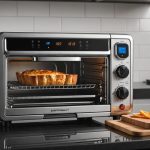Understanding Induction Cooking
Induction cooking represents a modern and efficient way of heating food. Unlike traditional methods, it uses electromagnetic fields to heat pots and pans directly, rather than relying on flames or electric coils. This process involves a copper coil beneath the cooktop that generates a magnetic field when electric current flows through it. When an induction-compatible pot is placed on the cooktop, the magnetic field excites the atoms in the cookware, producing heat energy instantly.
The benefits of induction cooktops are numerous. They offer rapid heating and precise temperature control, making them highly energy-efficient. Induction cooktops are also easy to clean since the surrounding surface remains cool. Moreover, they provide a safer cooking environment as there’s no open flame or risk of gas leaks.
Additional reading : The Perfect Frying Pan Shape for Effortless Crepe Flipping: A Guide to Success!
Despite these advantages, induction cooking often encounters several myths. One common misconception is that induction cooktops require specialized cookware. However, many existing pots and pans work well as long as they have a magnetic base. Another myth is that induction cooktops are noisy; any sound typically comes from the cookware, not the cooktop itself.
Understanding these facets can help you appreciate and utilize induction cooking benefits fully.
Topic to read : Top Materials for Heat-Resistant Oven Gloves: Which One Reigns Supreme?
Essential Features of Cookware for Induction Cooking
Understanding the induction cookware features ensures that home cooks can make optimal choices. The magnetic base is crucial for compatibility with induction cooktops because it interacts with the electromagnetic field to generate heat. Without these magnetic properties, cookware won’t heat up effectively, making it essential for achieving the quick heating benefits induction cooking offers.
Other Essential Features
When selecting induction-compatible cookware, also consider the handles, weight, and thickness. Handles should be sturdy, preferably heat-resistant, to ensure safe handling. The weight and thickness of pots and pans influence heat retention and distribution. Heavier cookware with even thickness tends to retain and distribute heat more effectively, which is particularly beneficial for dishes requiring sustained heating.
Moreover, a flat bottom is vital for even heat distribution. Uneven surfaces can result in hotspots, affecting the cooking quality of your meals. Compatibility with your cooktop’s size and design is also essential to ensure efficiency and safety.
In summary, while induction cooking technology offers substantial advantages, choosing the right cookware helps maximize these benefits. By focusing on magnetic bases and additional features like flat bottoms, you can enhance your cooking experience on induction cooktops.
Top Cookware Materials for Induction Cooking
When diving into the world of induction cooking, understanding the best materials for cookware is essential. These materials ensure maximum efficiency and enhance your cooking experience by being fully induction compatible.
Stainless Steel
Stainless steel is a practical choice for induction cooktops. It offers durability and a sleek appearance. Often, stainless steel cookware has an aluminium or copper core, improving heat conductivity and distributing heat evenly. However, lower-quality stainless steel can be prone to hot spots, so selecting high-quality options is recommended. Regular cleaning with mild detergent will keep stainless steel cookware looking pristine.
Cast Iron
Favoured for its superior heat retention, cast iron is another excellent choice for induction use. It is perfect for slow cooking and recipes requiring consistent heat. However, cast iron is heavy and requires proper seasoning to prevent sticking. Brands like Lodge offer pre-seasoned options, simplifying maintenance while delivering impressive performance.
Non-Stick
Non-stick options tailored for induction use typically comprise a durable base, such as anodized aluminium, with a non-stick coating. Suitable for low-fat cooking, these come with the added benefit of easy cleanup. While effective, it is essential to avoid high heat and metal utensils to prolong the coating’s life.
Recommendations for the Best Induction Cookware
When selecting the best induction cookware, it’s essential to consider the set’s overall performance and how well it aligns with your cooking needs. Here, we present top-rated options that showcase exceptional induction compatibility.
-
All-Clad Stainless Steel: Known for its even heat distribution and durability, All-Clad delivers exceptional performance on induction cooktops. Users praise its reliable construction and precise temperature control.
-
Le Creuset Cast Iron: This iconic brand offers enameled cast iron pots and pans, ideal for both slow cooking and comprehensive heat retention. Though on the pricier side, their longevity and versatility are worth the investment.
-
T-fal Non-Stick: Renowned for its superior non-stick coating and induction-compatible base, T-fal is an affordable yet efficient choice for low-fat cooking and easy cleanup.
-
Cuisinart MultiClad Pro: This stainless steel set features a tri-ply construction perfect for induction cooking. Notably, its sleek design and consistent performance impress users and experts alike.
By examining the user testimonials and reviews, these selections provide a balanced mix of quality, performance, and price. Whether new to induction cooking or looking to upgrade, these options cater to a range of culinary tasks and preferences.
Price Ranges and Buying Considerations
When evaluating cookware pricing for induction cooktops, understanding the diverse options available is vital. Prices vary widely based on materials, brand reputation, and included features. Budget for induction cookware typically ranges from £50 for entry-level sets to upwards of £500 for premium offerings.
Choosing the right set involves balancing quality and cost. Stainless steel sets are often mid-range in price, offering durability without excessive expense. Cast iron, while often pricier, provides excellent heat retention, worthwhile for serious chefs. Non-stick options are generally more affordable but vary significantly depending on the coating quality.
When investing in induction cookware, consider the cookware’s compatibility with your cooking style and frequency. For occasional cooking, more affordable brands may suffice. However, for those who cook frequently, investing in higher-end options can enhance overall kitchen performance.
Factors to consider include the cookware’s construction, warranty, and versatility. Ensure a magnetic base for effective induction cooking, and opt for well-reviewed brands known for reliability and durability. By weighing these considerations carefully, you can achieve the optimal balance between performance and price while fitting your specific needs.
Maintenance and Care for Induction Cookware
Proper cookware maintenance can significantly extend the lifespan and performance of your induction-compatible pots and pans. Understanding the specific needs of your cookware materials is crucial.
Cleaning Tips
Each type of cookware requires a slightly different approach. For stainless steel, use a mild detergent and avoid steel wool to prevent scratches. Cast iron needs seasoning to maintain its non-stick property; clean with hot water, avoiding soap. Reapply a thin layer of oil after drying to prevent rust. Non-stick pans should be hand-washed with a soft sponge to protect the coating’s longevity.
Longevity
To ensure long-lasting performance, always use the right utensils. Wooden or silicone tools prevent scratching, especially in non-stick cookware. Avoid exposure to high heat which can damage non-stick coatings and discolor stainless steel.
Storage Solutions
Prevent damage and scratches by storing induction cookware properly. Consider using protective pads between pans to stop them from chipping. Utilize hanging racks or cabinets segregated by cookware material to keep them in optimal conditions.
By following these care, cleaning, and storage guidelines, you can enjoy the benefits of your induction cookware for many years, ensuring effective and efficient cooking every time you use it.
Conclusion on Choosing Induction Cookware
Selecting the right induction cookware hinges on understanding the balance between induction cookware features and your unique cooking style. Ensuring compatibility is fundamental; therefore, prioritise a magnetic base to effectively harness the electromagnetic fields used in induction cooking benefits. This involes meticulous attention to the construction of the cookware.
Each material offers distinct advantages and requires specific care. Stainless steel, celebrated for its durability and sleek appearance, is best chosen in higher qualities to avoid hot spots. Cast iron excels in heat retention but needs regular seasoning to maintain its non-stick quality. Non-stick options, while offering ease, should be used with care to extend their coating’s life.
While each cookware type brings its pros and cons, always weigh the price against long-term user satisfaction. Cookware pricing depends on material, brand, and additional features. Premium investments often yield better durability and performance, enhancing kitchen efficiency over time.
Make informed choices by considering the buying guide aspects, ensuring that the cookware not only meets your budget but also enhances your culinary experience. By focusing on user satisfaction, you ensure each meal is prepared with the utmost precision and quality.











